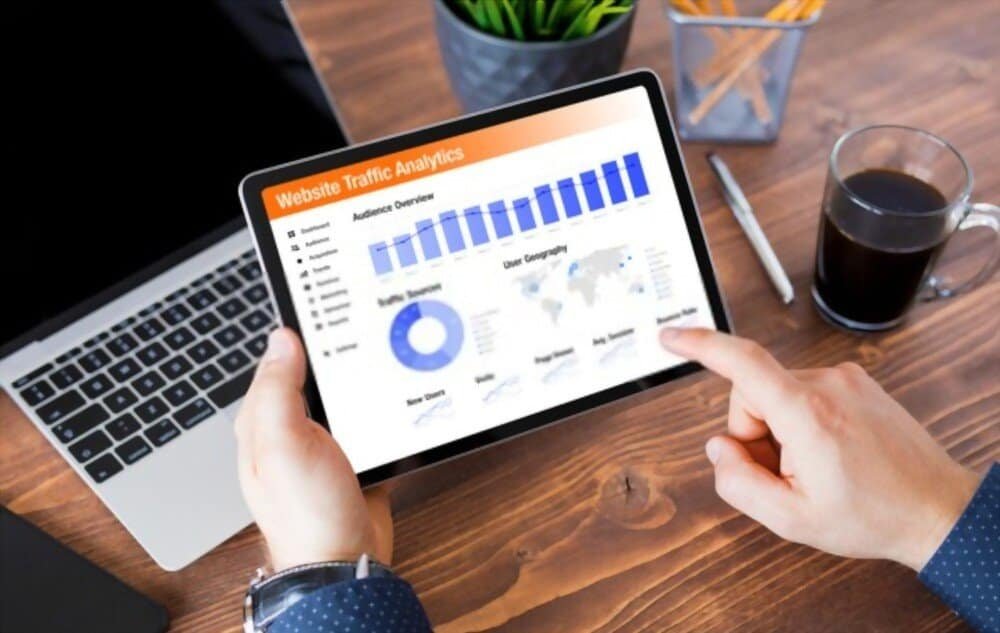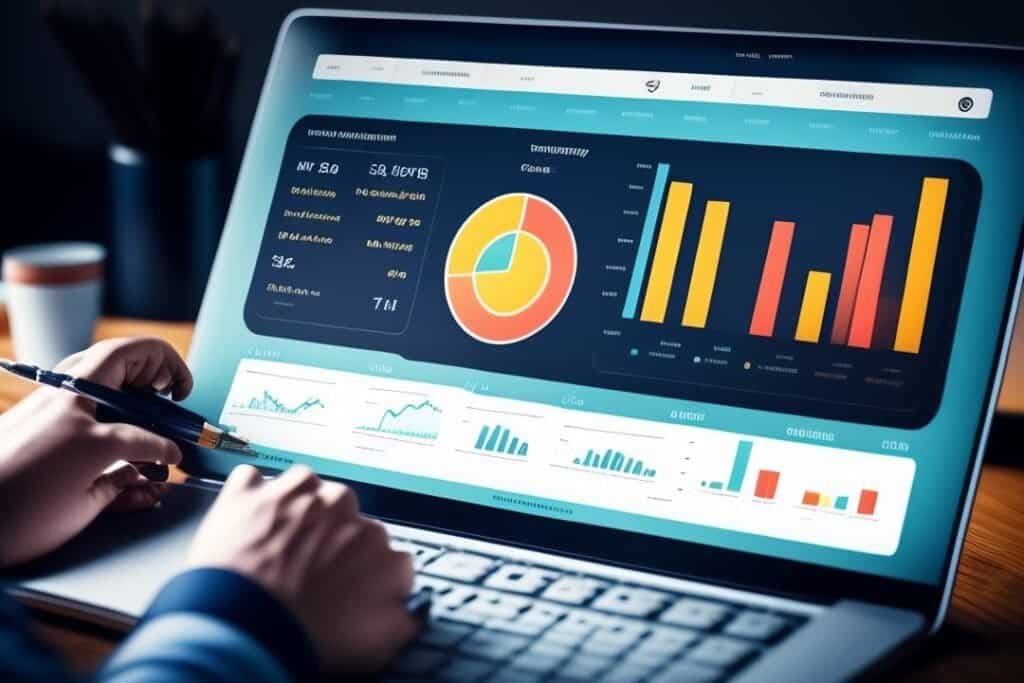Hey there! Wouldn’t it be amazing to have a crystal ball showing you exactly how customers interact with your business, where they get stuck, and how to smooth their path to purchase? That’s the magic of funnel analytics!
What is this Funnel Analytics Wizardry?
Funnel analytics is like a GPS for your customer journey. It tracks how users move through your sales and marketing funnel, from the first time they hear about you to the moment they convert into paying customers. Imagine a funnel: people enter at the top, and ideally, a good chunk comes out the bottom as happy customers. Funnel analytics helps you see where the leaks are in your funnel so you can plug them up and optimize for maximum conversions.
Why Does Funnel Analytics Matter? Because explosive growth matters!
Think about it:
- Boost Your Conversion Rates: By identifying drop-off points and optimizing each stage, you’ll see a surge in conversions, meaning more sales and happy customers.
- Laser-focused marketing: understand which campaigns and channels bring in the best leads so you can double down on what works and ditch what doesn’t.
- Unforgettable User Experiences: Smooth out the customer journey and create a frictionless experience that delights users and keeps them coming back for more.
- Data-Driven Decisions, Not Guesswork No more flying blind! Make informed decisions based on real user behavior to maximize your ROI.

Unmasking the Secrets: Stages of a Conversion Function
Funnel analytics breaks down the customer journey into distinct stages. While these can be customized to your business, here’s a common framework:
1. Awareness: This is where the magic begins! People become aware of your brand through various channels like social media, ads, content marketing, or word-of-mouth.
2. Interest: They start to show interest by clicking on your ads, visiting your website, or engaging with your content.
3. Consideration: Now they’re actively considering your product or service. They might download a whitepaper, watch a demo video, or compare you to competitors.
4. Decision: Time for the big decision! They’re ready to buy, but they might need a little nudge, like a special offer or a free trial.
5. Action: Hooray! They hit that “Buy Now” button or fill out that contact form, becoming a valued customer.
6. Retention: The journey doesn’t end with the sale! Keeping customers engaged and happy is key to long-term success.
Unlocking the Treasure Chest: Key Metrics in Functional Analytics
To get the most out of funnel analytics, you need to track the right metrics:
- Conversion Rate: The percentage of users who complete a desired action, like making a purchase or signing up for a newsletter. This is the ultimate measure of your funnel’s effectiveness.
- Average Order Value: The average amount spent per order. This helps you understand the value of each customer and identify opportunities to increase revenue.
- Customer lifetime value: the total revenue a customer generates over their entire relationship with your business. This metric highlights the importance of customer retention.
- Funnel Abandonment Rate: The percentage of users who drop off at each stage of the funnel. This metric helps you pinpoint problem areas and optimize for better flow.

Supercharge Your Success: Tools and Strategies for Funnel Optimization
Ready to take your funnel from leaky to legendary? Here are some powerful strategies and tools to help you:
1. Landing Page Optimization: Captivate Your Audience
Your landing page is often the first impression you make on potential customers. Make it count!
- Clear and concise messaging: Get straight to the point and highlight the benefits of your product or service.
- Visually Appealing Design: Use high-quality images, videos, and graphics to grab attention and make your page visually engaging.
- Strong call-to-action: Tell visitors what you want them to do and make it easy for them to take action.
- Mobile-Friendly Experience: Ensure your landing page looks great and functions flawlessly on all devices.
2. Personalized Messaging: Speak Directly to Their Needs
Nobody likes feeling like just another number. Tailor your messaging to resonate with individual users:
- Use Data to Segment Your Audience: Divide your audience into groups based on demographics, interests, or behavior.
- Create targeted content: Offer valuable information that addresses the specific needs and pain points of each segment.
- Personalize Your Emails and Offers: Use dynamic content to personalize emails and offer tailored recommendations based on user preferences.
3. A/B Testing: Let Data Guide Your Decisions
Don’t rely on guesswork! A/B testing allows you to compare different versions of your landing pages, emails, or ads to see what performs best:
- Test Different Headlines, Images, and Calls to Action: See what resonates best with your target audience.
- Analyze the results and make data-driven decisions: Choose the variations that drive the highest conversion rates.
4. Functional Tracking Tools: Your Analytics Superheroes
Investing in the right tools will give you superpowers when it comes to understanding your funnel:
- Google Analytics: A free and powerful tool that provides a wealth of data about your website traffic and user behavior.
- Dataroid: A comprehensive platform that helps you track user journeys, identify drop-off points, and personalize messaging. Dataroid’s Funnels feature allows you to map out the customer journey and track conversions at each stage, while their User Path Analytics provides detailed insights into how users interact with your app.
- Hotjar offers heatmaps, session recordings, and user feedback tools to help you understand how users are interacting with your website.
5. Engage, Engage, Engage! Top, Middle, and Bottom
Every stage of your funnel needs love and attention. Here’s how to optimize for maximum engagement:
- Top-of-the-Funnel (TOFU): Focus on attracting a wide audience and building brand awareness through content marketing, social media, and paid advertising. Offer valuable content that educates and entertains, capturing the attention of potential customers.
- Middle-of-the-Funnel (MOFU): Nurture leads with targeted content that addresses their specific needs and helps them evaluate your product or service. Offer free trials, demos, and consultations to build trust and move them closer to a purchase.
- Bottom-of-the-Funnel (BOFU): Make it easy for leads to convert into paying customers by offering clear calls-to-action, simplifying the checkout process, and providing excellent customer support. Use retargeting ads and personalized emails to re-engage those who have abandoned their carts.

Conclusion
Funnel analytics isn’t just some fancy marketing jargon—it’s a game-changer for any business that wants to grow and thrive. By understanding your customer journey, optimizing your funnel, and leveraging the right tools and strategies, you can achieve incredible results. So, dive in, explore the data, and watch your conversions soar!
Remember, this is just the tip of the iceberg. There’s a whole world of funnel analytics waiting to be explored. So keep learning, keep experimenting, and keep pushing your business to new heights! Utilize the insights gained from your analyses to refine your strategies and enhance customer engagement. By staying proactive and adaptable, you’ll ensure that you not only understand your current metrics but also anticipate future trends. Remember, if you want to truly succeed, keep your funnel thriving!
FAQs
How long does it take to see results from funnel optimization?
Patience, my friend! Results can vary depending on the complexity of your funnel and the changes you make. You might see some immediate improvements, but it often takes several weeks or even months to see the full impact of your efforts. The key is to track your data closely and make adjustments as needed.
How often should I review my funnel analytics?
Regular check-ups are key to a healthy funnel! Aim to review your analytics at least once a month and more frequently during key campaigns or product launches. This will help you identify any bottlenecks or areas for improvement early on.
Can funnel analytics help in reducing customer churn?
Absolutely! Functional analytics can be a powerful weapon in the fight against churn. By understanding where customers are dropping off in their journey, you can proactively address their concerns, improve their experience, and increase their likelihood of sticking around.

